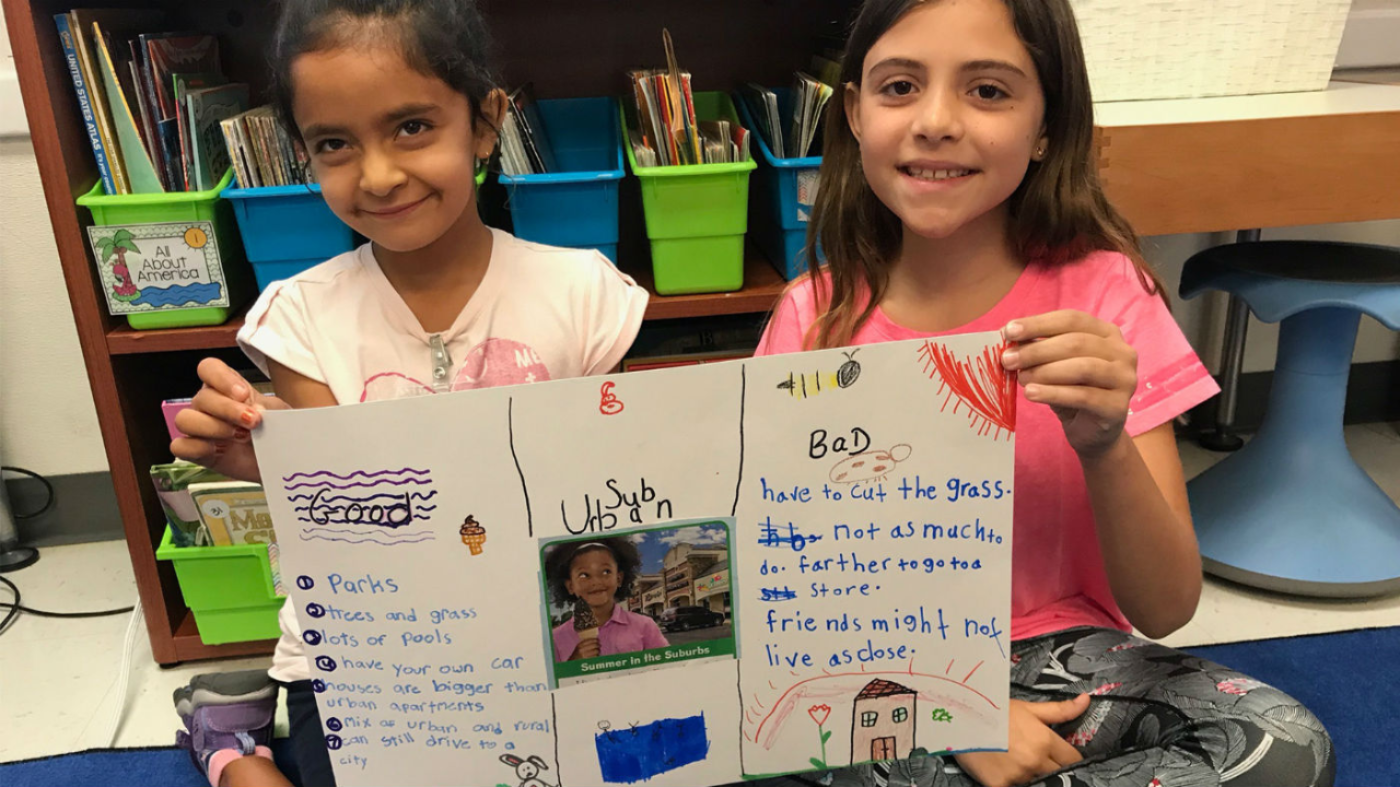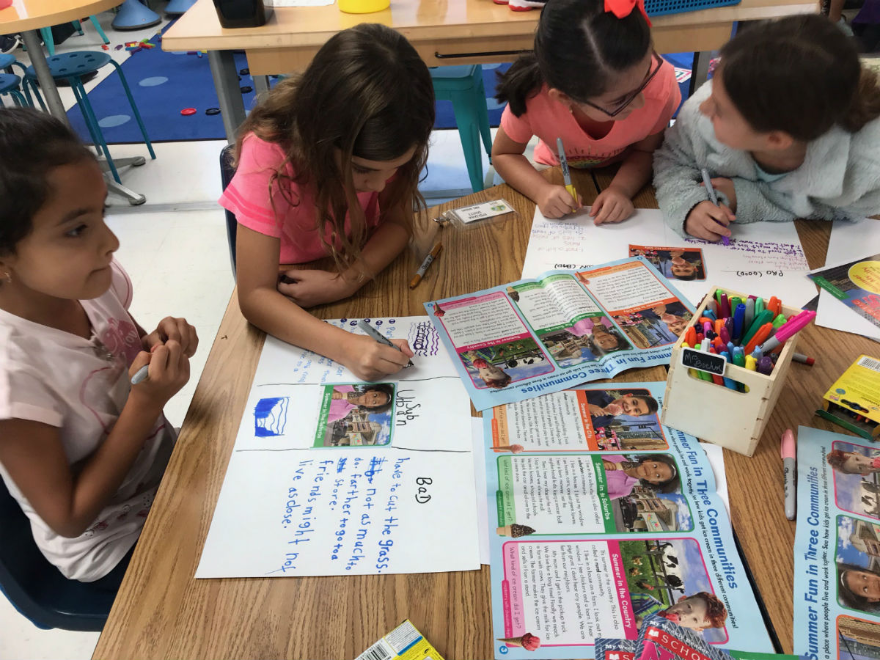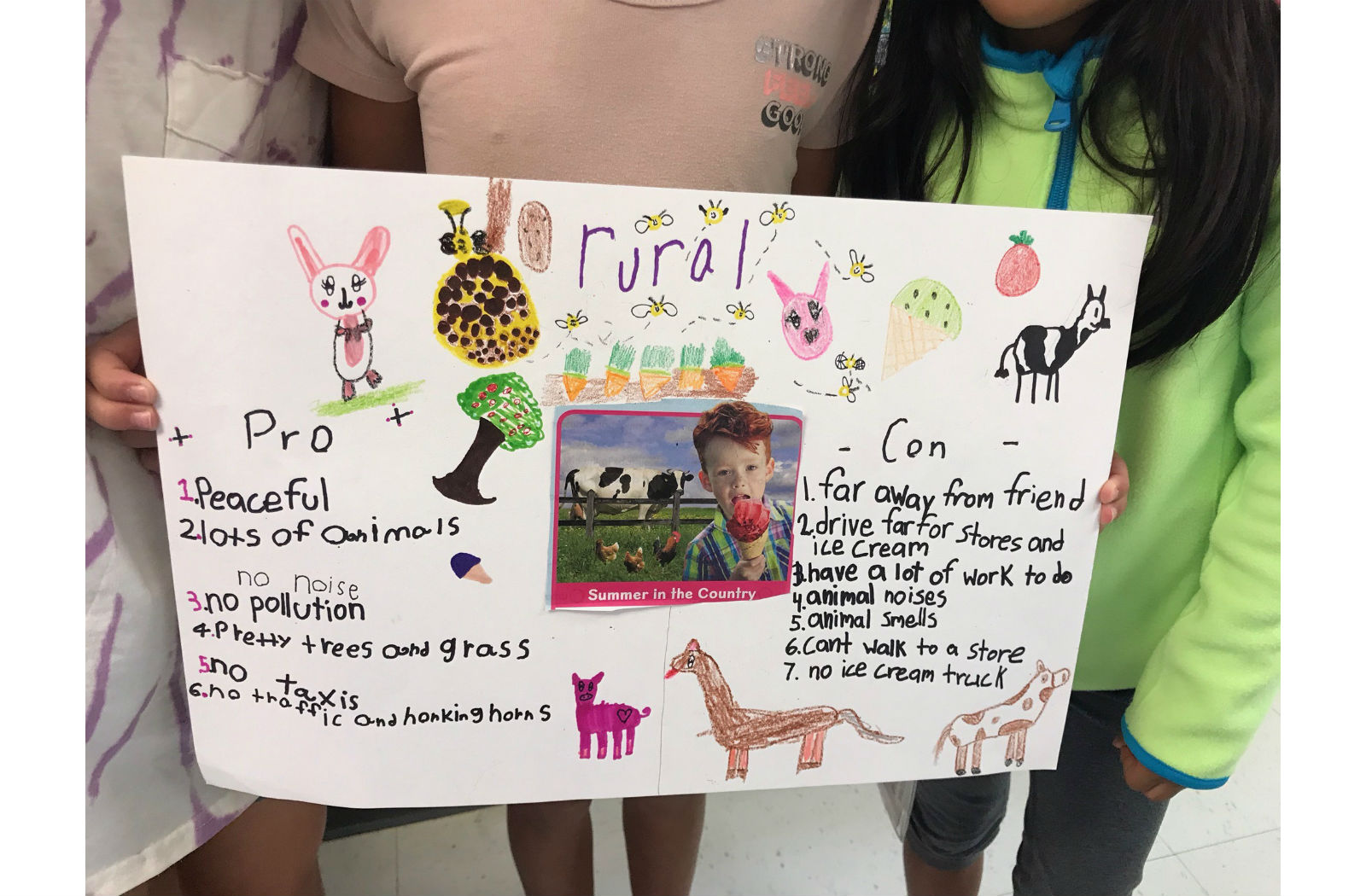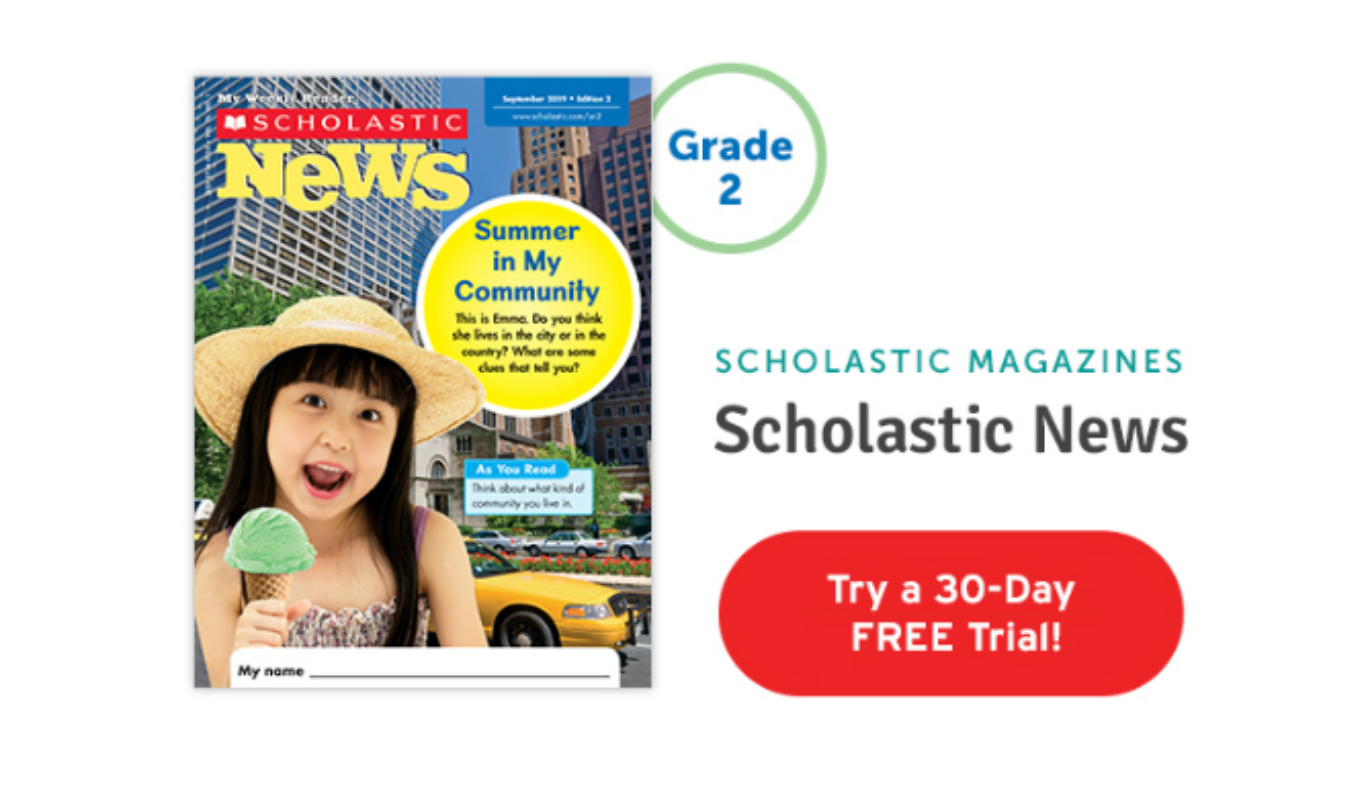Key Takeaways:
- Explore the three main types of communities with the Scholastic News 2 issue “Summer in My Community.”
- Delve into prior knowledge and misconceptions about different communities.
- Use group work to list pros and cons of living in each type of community.
My second graders LOVED September’s Scholastic News for Grade 2 issue about kids getting ice cream in three different communities—urban, suburban, and rural. There was lots of spontaneous chatter as we opened the magazine.
Seeing kids who looked like them in very different landscapes had them buzzing. Though the ice cream was also pretty attention getting, mostly they were chatting about places they’ve visited that look like the images.
I capitalized on that spontaneous chatter and asked them to tell everyone where they’d been. Then I asked them to say what type of community they thought it was.
From that, I was able to get an idea of their prior knowledge and discover some of their misconceptions. For example, back in Kindergarten, they took a class a trip to the “farm,” which is really just an attraction that’s part of a local park. I let their background knowledge drive the way we approached the lesson.





